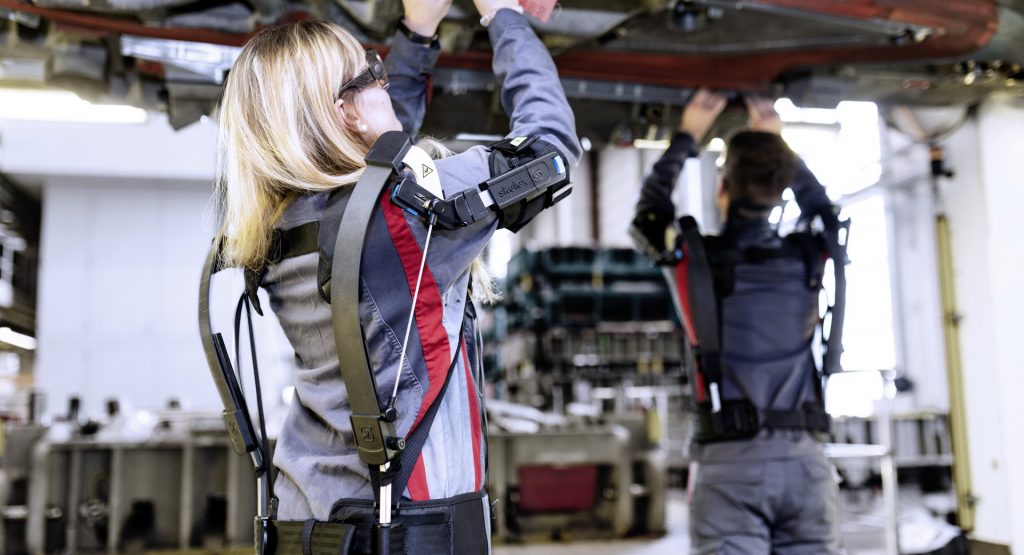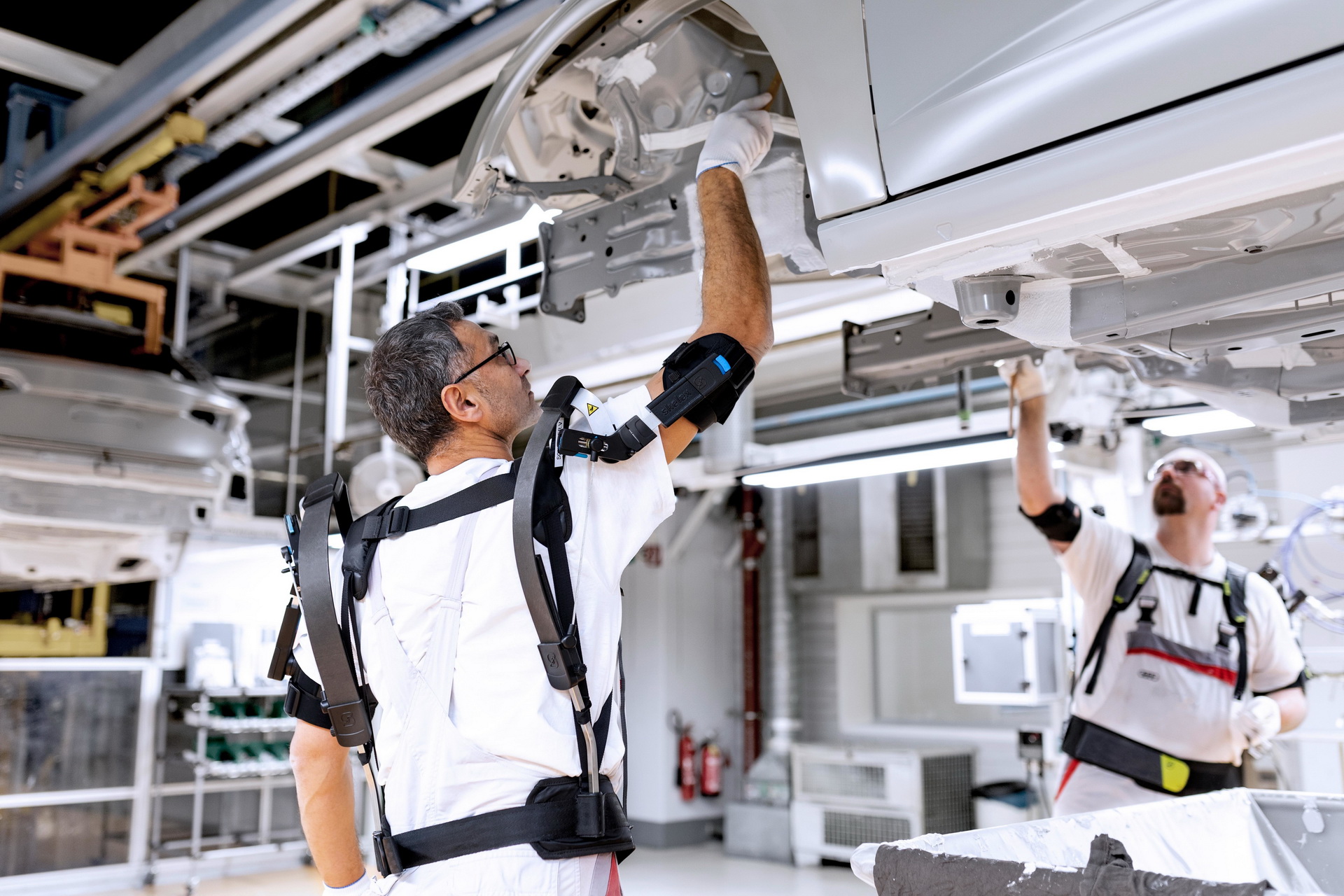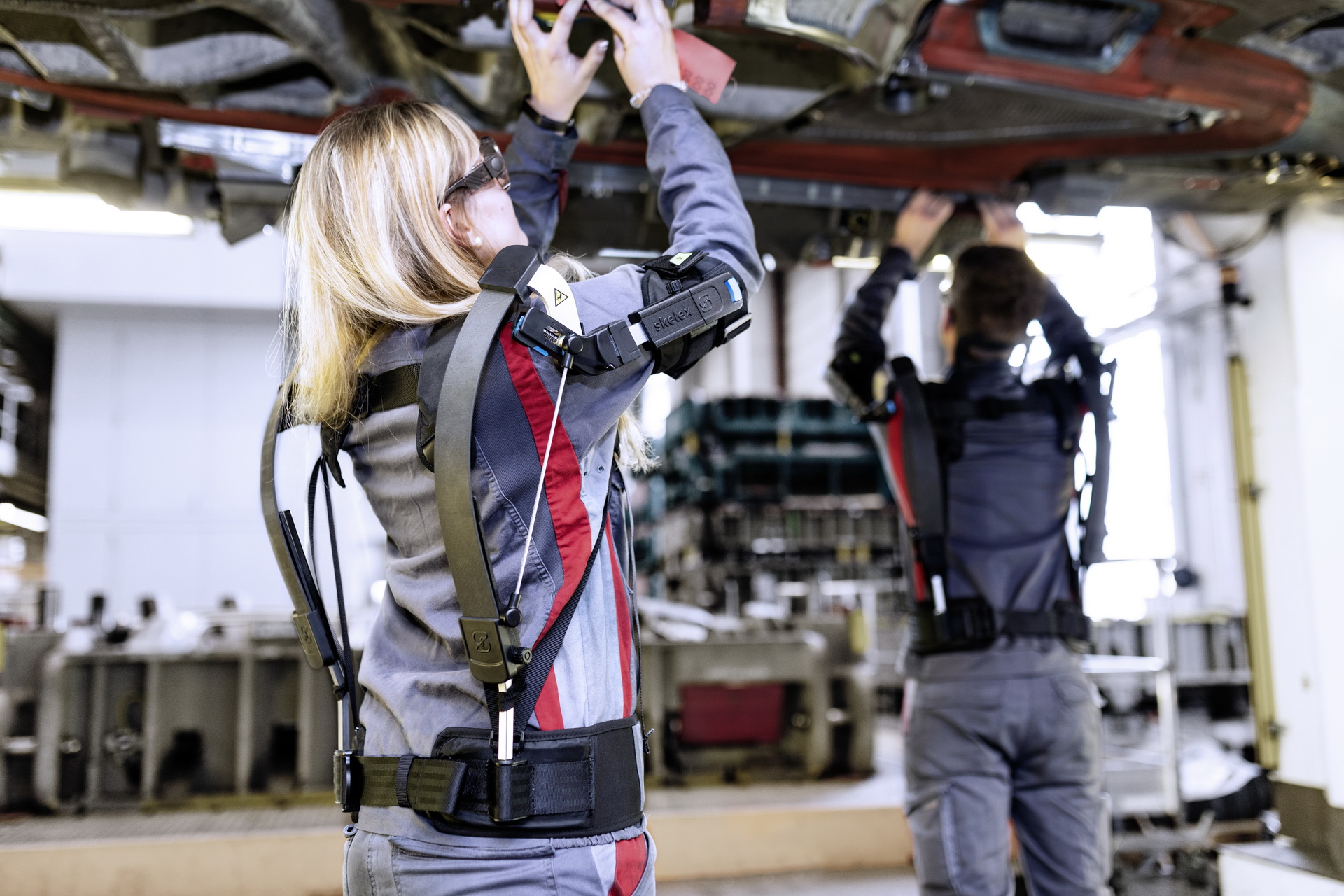Audi has started a comparative study of two exoskeletons that are designed to help employees during overhead tasks by protecting their joints and reducing the burden on their muscles.
Around 60 employees are using these external support structures at the moment over a period of several weeks at selected workstations in the paint shop, assembly and tool construction of the Ingolstadt factory.
Related: Hyundai Develops Exoskeleton; But No, It Won’t Turn You Into A Superhero
“Our employees are our most important asset. By constantly reducing the burden at the workstations, we can enhance their health and wellbeing. New technologies such as exoskeletons, with which we are making production more and more progressive, also contribute to this,” says Peter Kössler, Audi’s Board of Management Member for Production and Logistics.
Audi’s study goal is to answer key questions about these exoskeletons, including finding out if there’s any restriction on movement, how much support do they offer to employees and even how does the material feel after it has been worn for some time.
The comprehensive practical tests have been designed to help adapt the exoskeletons to the employees’ needs, being tested in both static and dynamic activities, including the installation of brake lines, screwing underbody panels into place and applying corrosion and sealing protection.
Audi is currently testing the Paexo from Ottobock and the Skelex 360 from Skelex, with both exoskeletons worn like a backpack on the shoulders and secured in place with a belt around the hips. The specially designed arm shells support the arms when the user is doing overhead work, absorbing part of the arm’s weight and re-direct it to the hips via the exoskeleton’s support structures. This is done purely mechanically, without any motorized drive.
The German automaker has been using exoskeletons for around four years in a bid to improve ergonomics for its employees, testing different systems in pilot projects. “The main focus here is always on ergonomic benefit, wearing comfort and reducing the burden on our employees,” says Ralph Hensel, a specialist in exoskeletons at Audi. Hensel adds that Audi’s goal is to adopt exoskeletons on a cross-site basis at predetermined workstations in the long term.









